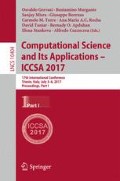Abstract
Cellular signaling systems regulate biochemical reactions operating in cells for various functions. The regulatory mechanisms have been recently studied intensively since the malfunction of the regulation is thought to be one of the substantial causes of cancer formation. However, it is rather difficult to develop the theoretical framework for investigation of the regulatory mechanisms due to their complexity and nonlinearity. In this study, more general approach is proposed for elucidation of emergence of the bi-stability in cellular signaling systems by construction of mathematical models for a class of cellular signaling systems and the exhaustive simulation analysis over the variation of network architectures and the values of parameters. The model system is formulated as regulatory network in which every node represents an activation-inactivation cyclic reaction for respective constituent enzyme of the network and the regulatory interactions between the reactions are depicted by arcs between nodes. The emergence of the stable equilibrium point in steady states of the network is analyzed with the Michaelis-Menten reaction scheme as the reaction mechanism in each cyclic reaction. The analysis is performed for all variations of the regulatory networks comprised of two nodes, three nodes, and four nodes with a single feedback regulation loop. The ratios and the aspects of the emergence of the stable equilibrium points are analyzed over the exhaustive combinations of the parameter values for each node with the common Michaelis constant for the regulatory networks. It is revealed that the shorter feedback length is favorable for bi-stability. Furthermore, the bi-stability and the oscillation is more likely to develop in the case of low value of the Michaelis constant than in the case of high value, implying that the condition of the higher saturation levels, which induces stronger nonlinearity. In addition to these results, the analysis for the parameter regions yielding the bi-stability and the oscillation are presented.
Access this chapter
Tax calculation will be finalised at checkout
Purchases are for personal use only
References
Ferrell Jr., J.E., Machleder, E.M.: The biochemical basis of an all-or-none cell fate switch in Xenopus oocytes. Science 280, 895–898 (1998)
Jeschke, M., Baumgartner, S., et al.: Determinants of cell-to-cell variability in protein kinase signaling. PLoS Comput. Biol. 9(12), e1003357 (2013)
Kholodenko, B.N.: Cell-signalling dynamics in time and space. Nat. Rev. Mol. Cell Biol. 7(3), 165–176 (2006)
Mai, Z., Liu, H.: Random parameter sampling of a generic three-tier MAPK cascade model reveals major factors affecting its versatile dynamics. PLoS One 8(1), e54441 (2013)
Qiao, L., Nachbar, R.B., et al.: Bistability and oscillations in the Huang-Ferrell model of MAPK signaling. PLoS Comput. Biol. 3(9), 1819–1826 (2007)
Volinsky, N., Kholodenko, B.N.: Complexity of receptor tyrosine kinase signal processing. Cold Spring Harb. Perspect. Biol. 5(8), a009043 (2013)
Byrne, K.M., Monsefi, N., et al.: Bistability in the Rac1, PAK, and RhoA signaling network drives actin cytoskeleton dynamics and cell motility switches. Cell Syst. 2, 38–48 (2016)
Kuwahara, H., Gao, X.: Stochastic effects as a force to increase the complexity of signaling networks. Sci. Rep. 3, 2297 (2013)
Ma, W., Trusina, A., et al.: Defining network topologies that can achieve biochemical adaptation. Cell 138(4), 760–773 (2009)
Mobashir, M., Madhusudhan, T., et al.: Negative interactions and feedback regulations are required for transient cellular response. Sci. Rep. 4, 3718 (2014)
Ramakrishnan, N., Bhalla, U.S.: Memory switches in chemical reaction space. PLoS Comput. Biol. 4(7), e1000122 (2008)
Shah, N.A., Sarkar, C.A.: Robust network topologies for generating switch-like cellular responses. PLoS Comput. Biol. 7(6), e1002085 (2011)
Tsai, T.Y., Choi, Y.S., et al.: Robust, tunable biological oscillations from interlinked positive and negative feedback loops. Science 321(5885), 126–129 (2008)
Huang, C.F., Ferrell Jr., J.E.,: Ultrasensitivity in the mitogen-activated protein kinase cascade. In: Proceedings of the National Academy of Science of the United States of America, vol. 93, pp. 10078–10083 (1996)
Brightman, F.A., Fell, D.A.: Differential feedback regulation of the MAPK cascade underlies the quantitative differences in EGF and NGF signalling in PC12 cells. FEBS Lett. 482, 169–174 (2000)
Levchenko, A., Bruck, J., et al.: Scaffold proteins may biphasically affect the levels of mitogen-activated protein kinase signaling and reduce its threshold properties. Proc. Natl. Acad. Sci. U.S.A. 97(11), 5818–5823 (2000)
Schoeberl, B., Eichler-Jonsson, C., et al.: Computational modeling of the dynamics of the MAP kinase cascade activated by surface and internalized EGF receptors. Nat. Biotechnol. 20, 370–375 (2002)
Hatakeyama, M., Kimura, S., et al.: A computational model on the modulation of mitogen-activated protein kinase (MAPK) and Akt pathways in heregulin-induced ErbB signalling. Biochem. J. 373(2), 451–463 (2003)
Heinrich, R., Schuster, S.: Fundamentals of Biochemical Modeling the Regulation of Cellular Systems. Chapman & Hall, New York (1996)
Author information
Authors and Affiliations
Corresponding author
Editor information
Editors and Affiliations
Rights and permissions
Copyright information
© 2017 Springer International Publishing AG
About this paper
Cite this paper
Sueyoshi, C., Naka, T. (2017). Exhaustive Analysis for the Effects of a Feedback Regulation on the Bi-Stability in Cellular Signaling Systems. In: Gervasi, O., et al. Computational Science and Its Applications – ICCSA 2017. ICCSA 2017. Lecture Notes in Computer Science(), vol 10404. Springer, Cham. https://doi.org/10.1007/978-3-319-62392-4_12
Download citation
DOI: https://doi.org/10.1007/978-3-319-62392-4_12
Published:
Publisher Name: Springer, Cham
Print ISBN: 978-3-319-62391-7
Online ISBN: 978-3-319-62392-4
eBook Packages: Computer ScienceComputer Science (R0)

